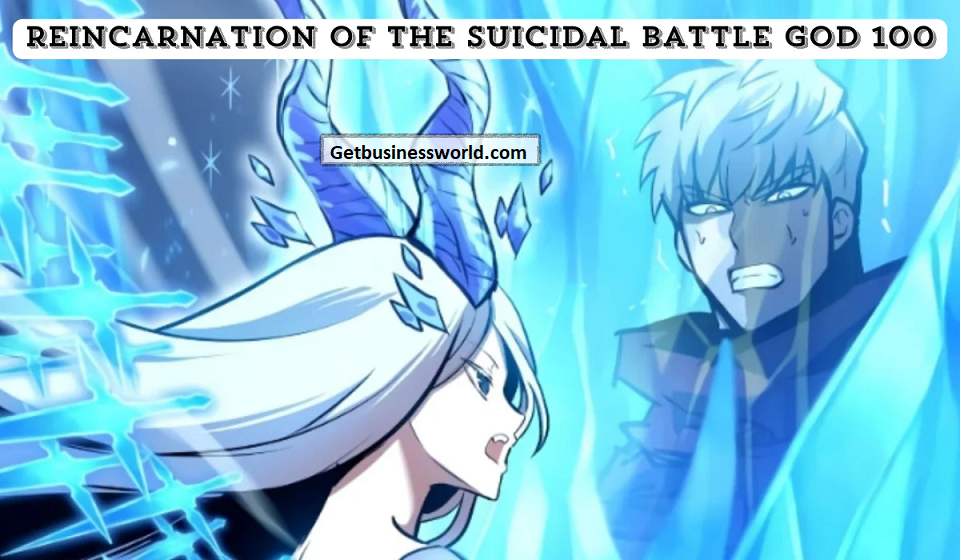In the ever-evolving landscape of anime and light novels, certain narratives capture the imagination of audiences with their unique blend of fantasy, introspection, and philosophical depth. One such captivating tale is “The Reincarnation of the Suicidal Battle God 100,” a work that invites readers to ponder life, death, and the eternal cycle of existence. In this blog post, we will explore the themes, character dynamics, and cultural significance of this intriguing story, shedding light on what makes it a noteworthy addition to the genre.
The Premise: A Timeless Cycle
At the heart of “The Reincarnation of the Suicidal Battle God 100” lies a complex premise that intertwines the concepts of reincarnation and existential struggle. The protagonist, once a legendary battle god, finds themselves trapped in a seemingly endless loop of death and rebirth. Each reincarnation presents new challenges and adversaries, forcing the character to confront their past actions and the weight of their previous lives.
This cyclical nature of existence not only serves as a narrative device but also evokes larger philosophical questions about identity and the essence of self. If each life is a new chance, what remnants of the past linger in the soul? This fundamental question resonates throughout the story, compelling both the protagonist and the audience to consider the implications of their choices and the potential for redemption.
Exploring Themes of Despair and Hope
One of the most striking themes in “The Reincarnation of the Suicidal Battle God 100” is the exploration of despair juxtaposed with hope. The protagonist’s initial journey is marked by a profound sense of hopelessness, stemming from their past as a battle god who engaged in relentless violence and carnage. This character arc provides a poignant commentary on the nature of power and the consequences it can have on one’s psyche.
As the narrative unfolds, however, glimmers of hope begin to emerge. The interactions with supporting characters introduce the idea of companionship, love, and the bonds that can be forged amidst despair. It is through these relationships that the protagonist starts to realize that there is a way to channel their past experiences into something meaningful. This transition from despair to hope symbolizes a broader human experience, inviting readers to reflect on their own struggles and the possibilities for growth and change.
Complex Characters: Beyond Archetypes
In “The Reincarnation of the Suicidal Battle God 100,” the characters are crafted with depth and complexity, transcending the typical archetypes often found in fantasy narratives. The protagonist is not merely a flawed hero; they embody the conflicting emotions of regret, anger, and yearning for redemption. Their journey is not only about overcoming external foes but also about battling their own inner demons.
Supporting characters play a vital role in shaping the protagonist’s development. Each character introduces their own struggles, adding layers to the overall narrative. From fellow warriors searching for their place in the world to mentors who provide guidance and wisdom, these interactions serve as catalysts for growth. The rich tapestry of characters enhances the story by showcasing the diverse range of human experiences, reinforcing the notion that each life, each battle, contributes to a greater understanding of existence.
Cultural Significance: A Reflection of Contemporary Issues
The themes explored in “The Reincarnation of the Suicidal Battle God 100” resonate deeply within contemporary society. The exploration of mental health, particularly in the context of despair and suicidal tendencies, is woven into the fabric of the narrative. The protagonist’s struggles can be seen as a metaphor for the isolation and pressures individuals may face in the modern world.
Moreover, the cyclical nature of life mirrored in the story offers a lens through which readers can reflect on their own journeys. The idea that life’s battles are ongoing and that every ending can lead to a new beginning is a powerful message in an age where many seek meaning in an increasingly chaotic world. The narrative encourages readers to embrace their struggles as part of a larger journey, providing a sense of comfort and understanding.
Visual and Aesthetic Elements: Crafting the World
The visual representation of “The Reincarnation of the Suicidal Battle God 100” plays an essential role in immersing the audience in its world. The artwork captures the intricacies of the setting, from vibrant landscapes to detailed character designs. The contrast between the beauty of the environments and the darkness of the characters’ inner turmoil visually symbolizes the duality of existence, a theme central to the narrative.
Furthermore, the use of color and light throughout the artwork signifies moments of hope or despair, enhancing the emotional impact of the story. This aesthetic choice not only complements the narrative but also serves to deepen the audience’s connection to the characters’ experiences, making their journeys feel more personal and relatable.
Conclusion
“The Reincarnation of the Suicidal Battle God 100” is a multifaceted story that transcends traditional genre boundaries, inviting readers to engage with profound themes of despair, hope, and the cyclical nature of existence. Through its complex characters, rich narrative, and visual artistry, it provides a deep reflection on the human experience, exploring what it means to live, struggle, and ultimately find redemption.
In a world where challenges often feel insurmountable, this tale resonates as a reminder of the resilience of the human spirit. As the protagonist navigates their journey across countless lives, readers are left with a powerful message: every ending is but a new beginning, and the battles we face shape not only who we are but also who we can become. Whether you’re an avid fan of fantasy narratives or simply someone seeking a story that mirrors the complexities of life, “The Reincarnation of the Suicidal Battle God 100” is undoubtedly a journey worth taking.

